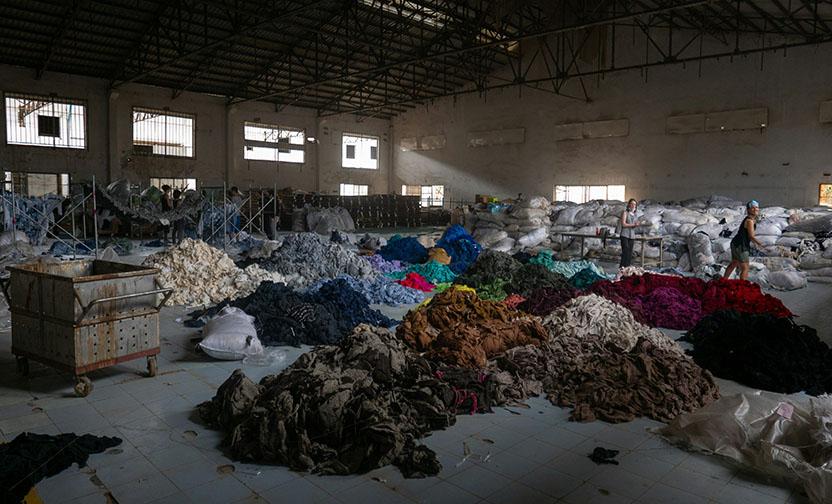
The Reasons for Size Inconsistencies Between Brands and Its Effect on the Fashion Market
Explore why clothing sizes vary across brands, the impact on shoppers and retailers, and how innovative solutions like Shaku can revolutionize the fashion industry by reducing returns and enhancing customer satisfaction.
Jun 28, 2025

In this Article
Share this Article
Introduction to Sizing Issues
Every brand speaks a different language when it comes to sizing. Surely, you have faced the issue. You are a medium size at one brand, but in another one, the medium is not for you! This inconsistency naturally confuses shoppers, increases return rates, and eats into retailers' profits.
In 2022 and 2023, many consumers voiced their dissatisfaction with the Zara brand widely on social media and in the media. They stated that the same size varied significantly across the brand's models. According to Sky News, H&M officially announced in early 2018 that it would change its clothing sizes in the UK. However, in 2023, H&M acknowledged needing to improve size consistency.
What are the reasons for the size difference? And more importantly, is there a solution to reduce return rates and improve the customer experience?
Reasons for Sizing Chaos
In the highly competitive, unstable fashion world, size stability seems impossible, even though it is the most important factor in the success or failure of a fashion collection or retail store and directly impacts profitability.
A 2023 New Yorker article reported that online apparel retailers experience return rates averaging 40% of sales, mainly due to sizing and fit issues.

There are many reasons for this problem
Different Target Customers
Most fashion labels prefer to follow their sizing charts to cater to their target customers. For example, a brand targeting athletic wear may narrow clothes at the waist. Different brand measurements lead to further complications in cross-brand size comparisons.
Vanity Sizing
Brands shrink the number of clothing tags, which is called Vanity sizing. It is a psychological trick that makes shoppers think they have a thinner body and boosts their self-esteem. It means that a size 6 dress might actually be a size 10. While vanity sizing may enhance customer confidence, it increases the confusion surrounding garment sizing.
Lack of Standard Units of Measurement
While various organizations have already developed standardized sizing, brands are reluctant to implement universal sizing, and truthfully, they have every right to.
Universal sizing ignores the variation in human body shapes. In other words, Standard units of measurement do not solve the problem! Brands and customers need a smarter, more optimized response that embraces the individuality of clothing sizes to make the shopping experience more satisfying and prevent store losses.
The Side Effects of Sizing Issues
The impact of size inconsistencies goes far beyond a disappointing shopping experience. This overlooked critical point has a butterfly effect throughout the entire ecosystem and supply chain.
Poor sizing is costly! According to a 2023 Vogue Business article, brands face increased return rates, with shoppers sending back $112 billion in merchandise globally.
Customers who are disappointed in purchasing often abandon brands. In a market that is becoming more competitive every day, losing a customer means lost profit opportunities, reduced market share, and a weakened brand position.
The Earth suffers from the complexity of size. The carbon footprint of returned products includes greenhouse gas emissions, repackaging, and often disposal.
Returns handling costs, including warehousing, inspection, restocking, and sometimes discounts or refunds, can reduce margins and discourage investment in innovation.
So, What Is the Solution?

The sizing issues in both online fashion retail and physical retail stores can lead to dissatisfaction among consumers.
With the variety of sizes available from each brand and retailer, it can be time-consuming to measure each garment and upload it online to capture customer satisfaction. There is also always the possibility of human error. While 3D body scanning technology exists, it is often expensive, inaccessible to the average consumer, or impractical for quick online purchases.
You may think how much better it would be to leave this task to someone with minimal errors and maximum speed. That such magic is real!
Shaku is an AI-powered garment measurement service platform that reads clothing dimensions directly from images with the highest accuracy.
For retailers, Shaku helps to lower their costs and fewer sizing-related complaints. For shoppers, confidence is knowing exactly how a product will fit before buying.
How Can Shaku Make Magic Happen?
With Shaku, you can measure clothes by uploading a single photo and, within seconds, receive all the measurements you need: chest, waist, length, and more. You can download and import the results into your website or social media. The sizing issue in fashion directly affects sustainability, profitability, and customer trust, and the problem is solved with Shaku! Sign up here at dashboard.shaku.tech and use your free trial for Shaku's garment measurement service.
FAQs
Why do clothing sizes vary between brands?
How does Shaku improve the shopping experience?